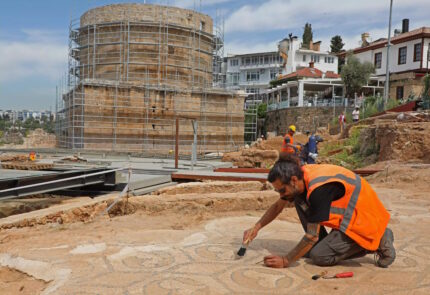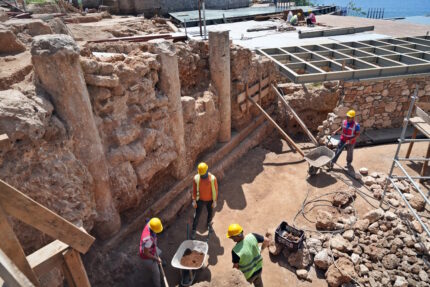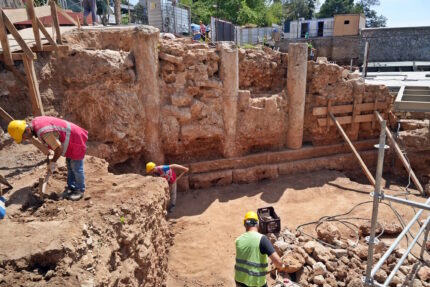A long stretch of a Roman colonnaded street has been discovered in the resort town of Antalya, southern Turkey. So far a section of wall 100 meters (328 feet) long has been uncovered, but archaeologists expect to find much more, up to 800 meters (half a mile) of the colonnaded wall.
The massive wall was unearthed during an excavation of around the Hıdırlık Tower, a landmark of the city that was built in the 2nd century A.D. and is the one of the oldest surviving monuments in the city. Located at the intersection of the city walls and the sea wall, the original square base may have been built as early as the Hellenistic period (323 – 32 B.C.). It took its final form in the Roman era, (1st or 2nd century A.D.) when the circular second story was built, giving it the shape and height it has now.
Its original purpose is uncertain, but the currently scholarly consensus is that it was a mausoleum built for the family of Marcus Calpurnius Rufus, an important senatorial and consular family in the 1st century. The Byzantines converted it into a defensive tower, integrating it into the city walls. In subsequent eras it was also used as a lighthouse.

The structural work on the tower is almost complete, and the observation deck is scheduled to open this summer. Meanwhile, the excavation is ongoing and archaeologists hope to uncover the full length of the surviving colonnaded wall.
* This article was originally published here










No comments:
Post a Comment